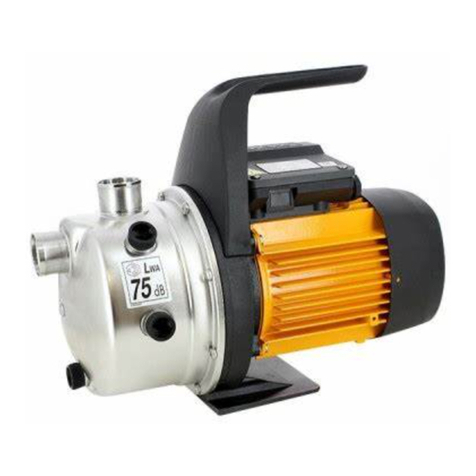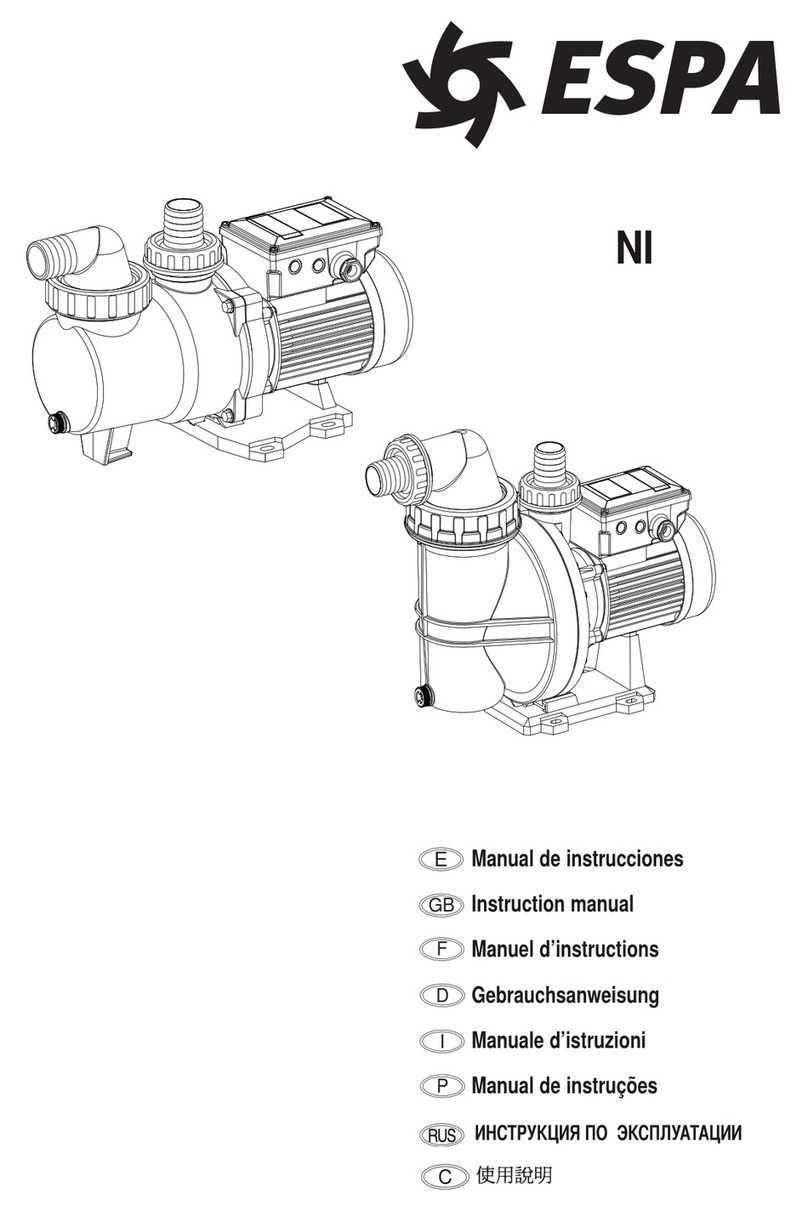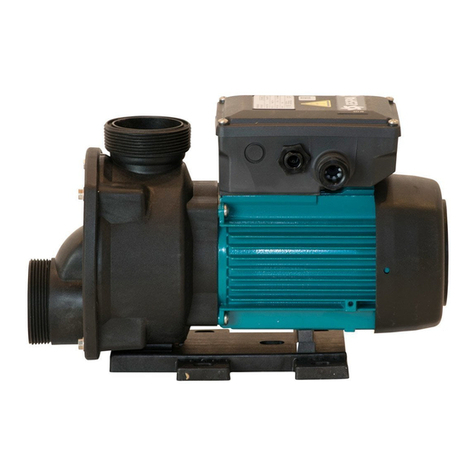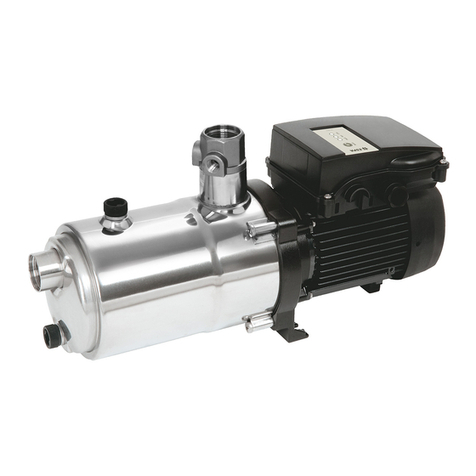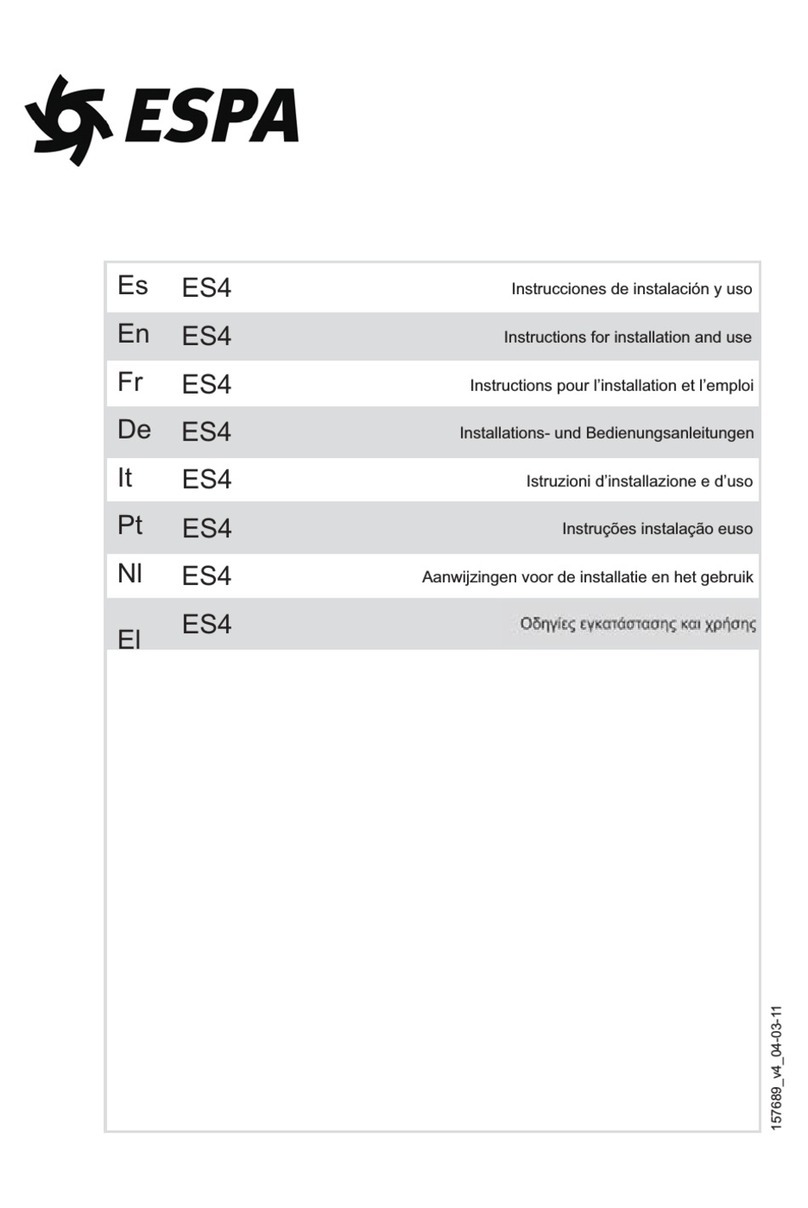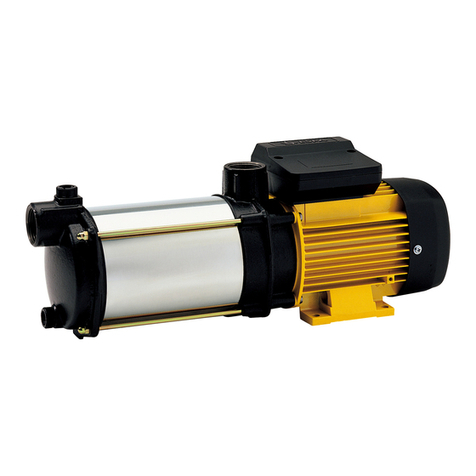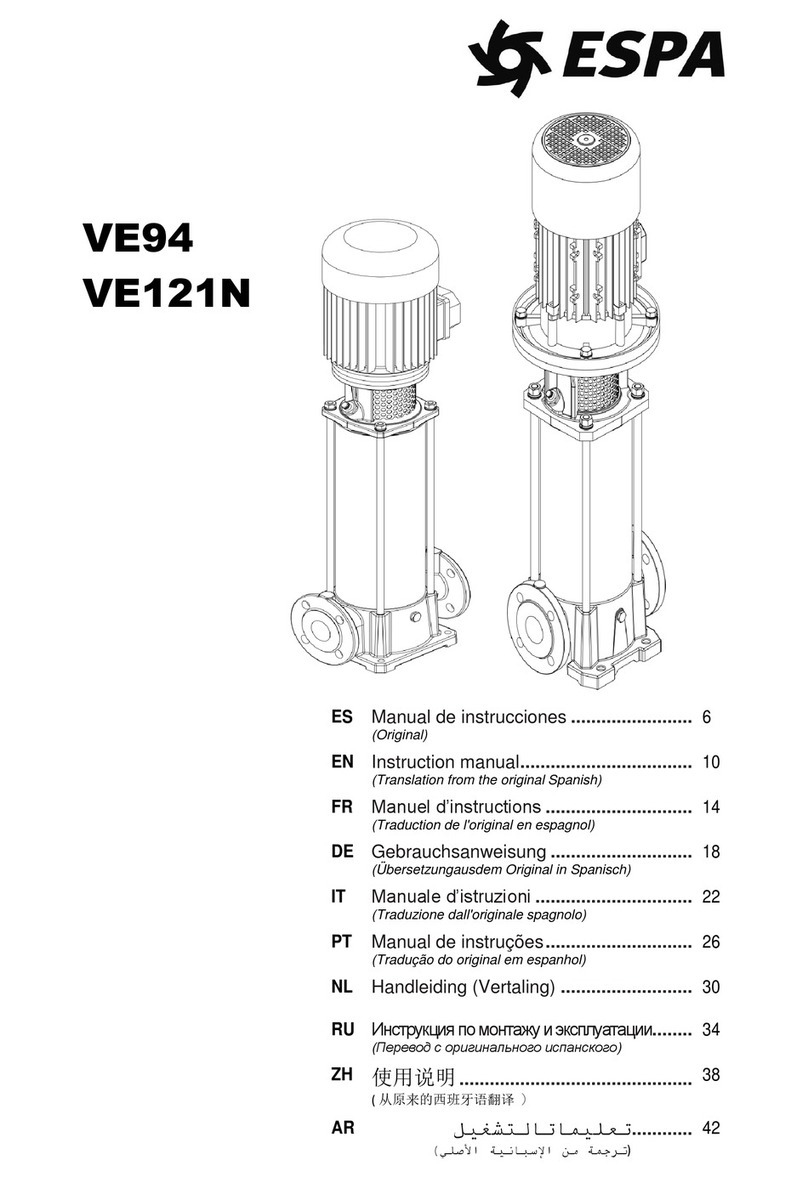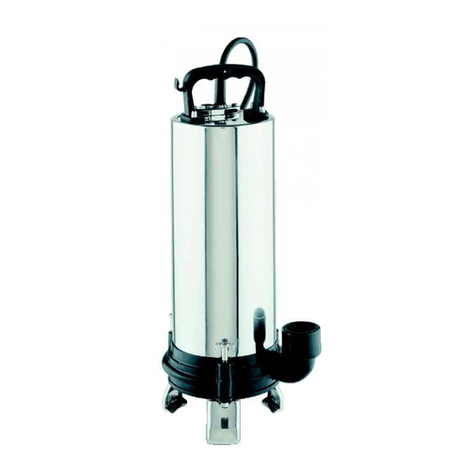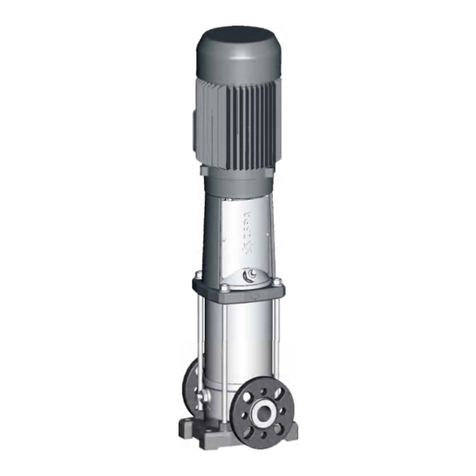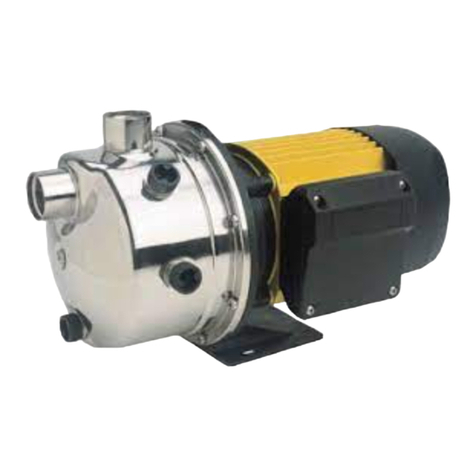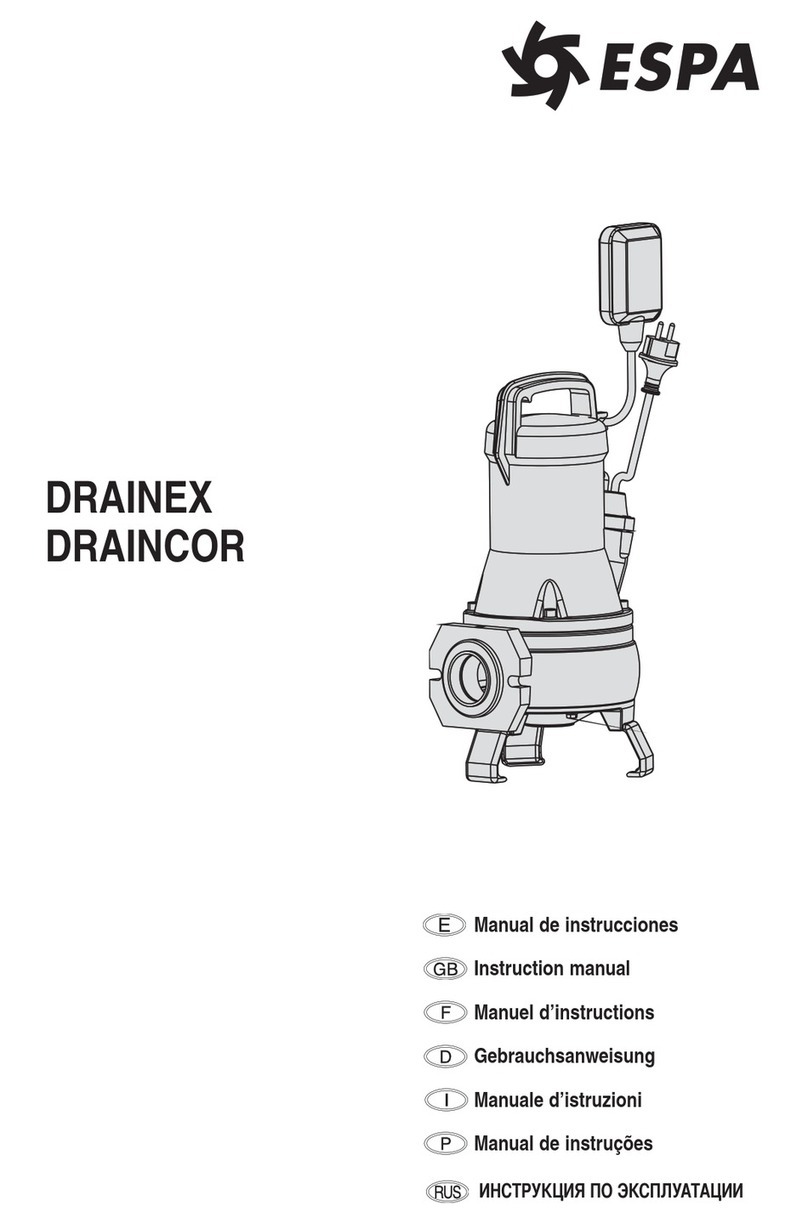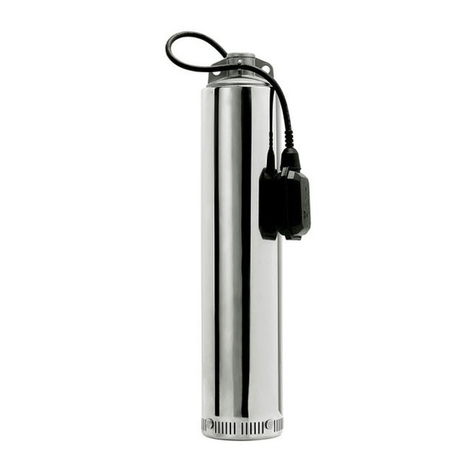
1
Tiper15
Manual de instrucciones Instruction manual
Manual de instrucciones
ADVERTENCIA PARA LA SEGURIDAD
La siguiente simbología junto a un párrafo indica la
posibilidad de peligro como consecuencia de no respetar las
prescripciones correspondientes.
PELIGRO
riesgo de
electrocución.
La no advertencia de esta
prescripción comporta un riesgo de
electrocución.
PELIGRO
La no advertencia de esta
prescripción comporta un riesgo de
daño a personas o cosas.
ATENCIÓN
La no advertencia de esta
prescripción comporta un riesgo de
daños al equipo o a la instalación.
1. GENERALIDADES
Las instrucciones que facilitamos tienen por objeto informar sobre
la correcta instalación y óptimo rendimiento de nuestras bombas.
Son bombas centrífugas monocelulares horizontales, con motor
eléctrico incorporado.
Diseñada para trabajar con equipos compactos de hidromasajes.
Con dispositivo de vaciado completo para evitar el líquido residual
en cada puesta en marcha.
Con aislamiento entre parte motor y bomba superior a 3750 V.
Concebida para trabajar con aguas limpias, exentas de sólidos en
suspensión y a una temperatura máxima de 50°C.
ATENCIÓN: el adecuado seguimiento de las
instrucciones de instalación y uso, así como de los
esquemas de conexión eléctricos garantiza el buen
funcionamiento de la bomba.
PELIGRO: La omisión de las instrucciones de este
manual puede derivar en sobrecargas en el motor,
merma de las características técnicas, reducción de la
vida de la bomba y consecuencias de todo tipo, acerca
de las cuales declinamos cualquier responsabilidad.
2. INSTALACIÓN
2.1. Fijación
La bomba deberá descansar sobre una base sólida y horizontal.
Debe estar fijada a ella mediante tornillos (4 x Ø8), aprovechando
los agujeros que existen en el soporte, para asegurar la
estabilidad del montaje.
2.2. Montaje de la tubería de aspiración
La tubería de aspiración debe poseer un diámetro igual o superior
al de la boca de entrada de la bomba, conservando
permanentemente una pendiente ascendente mínima del 2% para
evitar bolsas de aire y para posibilitar el vaciado de la bomba
(Figura 2).
2.3. Montaje de las tuberías de impulsión
Se recomienda utilizar tuberías de un diámetro igual al de la boca
de impulsión o mayor para reducir las pérdidas de carga en tramos
largos de tuberías.
Las tuberías jamás descansarán su peso sobre la bomba.
2.4. Conexión eléctrica
La instalación eléctrica deberá disponer de un sistema
de separación múltiple con abertura de contactos
≥3 mm. La protección del sistema se basará en un
interruptor diferencial (I∆n = 30 mA).
La conexión eléctrica debe ser realizada por personal técnico
cualificado.
El cable de alimentación debe cumplir con las exigencias de las
correspondientes normativas vigentes en cada país. Es de uso
obligado que las conexiones del cable de alimentación al motor de
la bomba, se hagan con los correspondientes terminales.
Los motores monofásicos llevan protección térmica incorporada.
Siga las instrucciones de la Figura 1 para una correcta instalación
eléctrica.
La instalación debe realizarse y siguiendo la norma
"EN 60335-2-60". Asegurarse que la conexión del cable de masa
se ha realizado correctamente. Asegurarse que la conexión
equipotencial entre la bañera y la bomba se ha realizado
correctamente.
2.5. Controles previos a la puesta en marcha inicial
ATENCIÓN: Compruebe que la tensión y la frecuencia
de la red corresponden a la indicada en la placa de
características.
Asegúrese que el eje de la bomba gira libremente.
Deberá dotarse de un dispositivo, en el conjunto de hidromasaje,
para que la bomba no se ponga en marcha si no existe un mínimo
nivel de agua. Llene la bañera. Deberá esperar a que el agua
alcance dicho nivel (Figura 2).
Asegúrese de que no exista ninguna junta o rácor con pérdidas.
LA BOMBA NO DEBE FUNCIONAR NUNCA EN SECO.
3. PUESTA EN MARXA
Abra todas las válvulas de paso en las tuberías, tanto en la
aspiración como en la impulsión.
Conecte el interruptor de suministro. El agua puede tardar unos
segundos en recorrer toda la longitud de tubería.
Compruebe el sentido de giro del motor, este debe ser horario
visto desde el ventilador.
Compruebe que la corriente absorbida sea igual o menor a la
máxima, indicada en la placa de características.
Si el motor no funciona o no extrae agua, procure descubrir la
anomalía a través de la relación de posibles averías más
habituales y sus posibles soluciones que facilitamos en páginas
posteriores.
4. MANTENIMIENTO
Nuestras bombas están exentas de mantenimiento.
Si se prevé un tiempo de inactividad prolongada se
recomienda desmontar la bomba y guardarla en un lugar
seco y ventilado.
ATENCIÓN: en caso de avería, la manipulación de la
bomba sólo puede ser efectuada por un servicio técnico
autorizado.
5. DESGUACE
Llegado el momento de desechar la bomba, esta no
contiene ningún material tóxico ni contaminante.
Este producto no debe ser tirado al contenedor normal
de basuras. Utilice el servicio local, público o privado, de
recogida selectiva de residuos.
Los componentes principales están debidamente
identificados para poder proceder a un desguace



